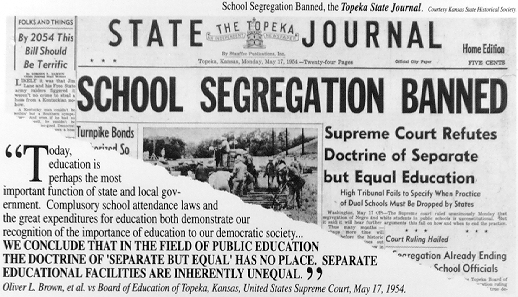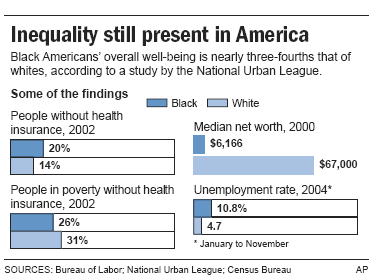In both the video, "Between Barack and a Hard Place" by Tim Wise and the article, "Separate and Unequal" by Bob Herbert arguments against the notion that America is a land of equal opportunities for all are debated. Tim Wise makes the claim that many white Americans would like to believe that because of the election of a black president, that we are currently living in a post racial America. However, this could not be further from reality. He states that although we may have abolished Racism 1.0 (racism people can plainly notice by seeing it), that Racism 2.0 (racism that carves out exceptions for only some people of color) still widely exists. This relates to McIntosh's quote, "I was taught to see racism in only individual acts of meanness, not in invisible systems conferring dominance on my group" (1). McIntosh and Wise both make the argument that most white people in society only perceive racism as visible acts that can be physically seen and witnessed, however the racism that is most present today can not be physically seen. It is the privileges that all whites can be accepted into society while most blacks can not be acknowledged in society unless they are identified truly exceptional human beings, comparable to Barack Obama. However, most white Americans are still living in denial and ignorance to this, believing that blacks have equal opportunities. Wise states that if we want to know if we still live in a world of inequality and racism we must go to the target of the problem, the blacks who are still greatly affected by these issues. This statement made by Wise reflects Delpit's belief that "Those with power are frequently least aware of - or least willing to acknowledge its existence. Those with less power are often more aware of its existence" (24). Meaning, that white people are the ones in power, leaving them unaware of the social and economical inequalities that blacks still face in comparison to them, while Wise states that since blacks are the ones without this power in society they are more aware of the existence of racism today.
Much like Wise's video, Herbert's article makes most of the same arguments. He states that as a nation, we are still greatly separate as well as unequal. He explains, "Schools are no longer legally segregated, but because of residential patterns, housing discrimination, economic disparities and long-held custom, they most emphatically are in reality." This reminded me of the speech that Dr. Chris Emdin made at the Promising Practices Conference. Dr. Emdin highlighted many of the same issues, stating that although America may not still be legally segregated, that many schools are still separated. If you go to a school in a poverty stricken town such as South Providence, you are likely to find that almost all of the students are colored. While if you then go to a middle to upper-class town such as Barrington, you are more likely to find that most students are white and there are very little colored students. Herbert also goes on to make the argument that ,“Ninety-five percent of education reform is about trying to make separate schools for rich and poor work, but there is very little evidence that you can have success when you pack all the low-income students into one particular school.” This can be connected to a passage from Kozol's article that stated, "Clumping so many people, all with the same symptoms and same problems, in one crowded place with nothin' they can grow on? Our children start to mourn
themselves before their time." Both of these passages testify that putting all students in desolate conditions together will not allow them to improve their current situations and become more successful in the future, being surrounded by the same problems of poverty and unemployment leads students to give up hope from a young age. The black students that are currently in these schools that are "smothered by poverty" are never going to be able to become profitable unless they are able to be put into better schools in a more affluent environment with as Dr. Emdin stated in his speech, put in classrooms with teachers who truly believe in them and want to work their hardest to see them succeed.



Great job summing up the videos
ReplyDeleteand the article, and also connecting them to promising practices and our previous readings. A lot of your connections resonated with mine, great work!
I also really like the statistics you chose.
Your blogs are always very interesting to ready! also good jb connecting to promising practices!
ReplyDeleteGreat job connecting this blog to the promising practices! Also good summary of the videos
ReplyDelete